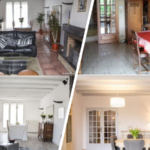Platycodon is a beautiful plant with blue-purple flowers perfect both indoors and outdoors. It is a plant that can decorate a beautiful garden as well as a terrace or balcony with style and elegance. The Platycodon likes sunny places and its flowers, even when cut, keep for a long time.
Platycodon © stock.adobe
This beautiful plant with its purple flowers is a delight on the balcony in summer and winter.
The Platycodon beautifies the garden with its magnificent flowers in the shape of bells of an incomparable color. This plant is suitable for green spaces but also for rockeries. It is a perennial species that can therefore decorate terraces and balconies with versatility, both in winter and in summer, giving its authentic timeless splendor.
Dwarf varieties are gorgeous and can also be grown in pots. The Platycodon likes loose, dry, well-drained soil because too much water could cause it to rot. From April to September, it should be watered regularly, especially during the hot months. During the growth period of Platycodon, it is good to mix water with fertilizer for flowering plants every 15 days or so.
© stock.adobe
The Platycodon is one of the most beautiful plants to decorate balconies or terraces in winter and summer, with its unique blue-purple flowers. Platycodon grandiflorus is a perennial herb plant native to East Asia (especially China, Siberia, Korea, and Japan). This plant belongs to the Campanulaceae family, although it has been assigned its own genus since 1830.
On the horticultural level, only the species Platycodon grandiflorus is known. There are several varieties, which have been obtained by research since the middle of the 19th century. Its name, platycodon, means “large bell”.
Characteristics of Platycodon Grandiflorus
Platycodon is an adaptable herbaceous plant that thrives in green spaces and rock gardens and can adorn borders. It can also be grown in containers, especially if you are dealing with dwarf species. The Platycodon does well indoors and outdoors and likes sunny positions. In this case, it grows very slowly and its maintenance can be significantly postponed.
Large garden plants have very attractive and durable stems that can be used to create potpourri and various arrangements. Platycodon is an exotic plant that knows how to beautify indoor and outdoor spaces thanks to its year-round appeal and which also resists cold temperatures.
© stock.adobe
Platycodon: cultivation and flowering
Platycodon prefers rich, loose, well-drained soil that is not too dry. When planting, garden soil should be mixed with balanced universal potting soil and a little coarse-grained pumice stone to increase drainage. The Platycodon can be exposed to full sun or partial shade, depending on the climatic conditions in which it lives.
From April to September, it should be watered regularly, especially in July and August. During the growth period, however, it is necessary to add to the water, during watering, fertilizer for flowering plants, at least every 15/20 days.
Campanula grandiflora plants are propagated by seed, in a cold greenhouse in autumn; in spring, the heads of the leaves can be divided; in summer, cuttings can be made, using the stems which have not produced flowers.
© stock.adobe
Platycodon: diseases and treatment
Platycodon is quite resistant to pests and diseases. However, avoid waterlogging and watch out for slugs and snails that feed on the leaves of this plant. To prevent slugs from infesting Platycodon, you can prepare beer traps or use slug pellets.
To see also:
How to grow Lewisia, this beautiful succulent plant with very special flowers
SHARE ON:
Follow Ehomedecor.net on



